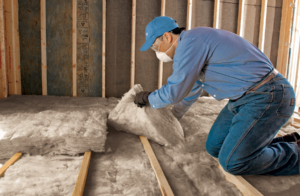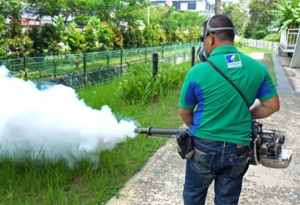With the right garage door, homeowners can enhance the curb appeal of their homes and improve energy efficiency. Patriot Garage Door also protects cars from the elements and makes entering and exiting the vehicle more convenient.

Choosing the right garage door depends on many factors. Be sure to consider a fire-rated door that meets local codes and the International Residential Code requirements.
From smart technology integration to energy efficiency, the garage door has come a long way from its utilitarian roots. With a variety of innovative options now available to homeowners, it’s possible to create an attractive and efficient entryway that enhances your home’s overall design. To help you make an informed decision, we’ve highlighted some of the most prominent trends in garage door design for 2024, ranging from customizable options to clever integrations.
Minimalist and sleek designs are gaining popularity, offering a clean appearance that complements modern architectural styles. One popular option is aluminum doors featuring flat panels and minimal hardware. This style is also highly durable, reducing maintenance and repair costs. Additionally, glass garage doors allow natural light to flood the space, promoting a brighter and more welcoming entryway.
Increasingly, homeowners are seeking garage door options that promote sustainability and eco-friendly living. For example, many garage door manufacturers now offer high-efficiency insulation that optimizes energy consumption and reduces environmental impact. This feature is especially helpful in colder climates, where garage doors play a significant role in maintaining consistent temperatures and cutting energy costs.
Another emerging trend is the use of intelligent garage door automation systems that seamlessly integrate with smart home ecosystems. These systems allow homeowners to remotely open and close their garage doors using smartphone apps or voice commands. This convenience helps to improve safety and security while simplifying daily routines.
While neutral shades have traditionally been the norm for garage doors, bold colors are starting to emerge as a stylish and affordable way to add personality to your home’s exterior. For instance, deep blues and moody grays can make a striking statement against a white or wooden backdrop. Alternatively, you can go for an even more subtle yet striking effect by choosing a textured finish or metallic hue that offers a unique visual appeal.
A growing number of homeowners are opting for garage doors that showcase their individuality and style preferences. To achieve this, they’re exploring color choices that are both classic and trendy, as well as customizing the design of their garage door with unique finishes and decorative hardware. This customization provides an opportunity to complement and highlight the architectural features of their home, boosting curb appeal and increasing property value.
Customization
Whether you’re building your first custom garage or updating your current one, there are a number of customization options available. You can choose the color, add windows or decorative hardware to create a unique design that will match your architectural style and complement the look of your home. You can also customize the insulation and automation options to maximize energy efficiency, safety and security.
A custom-designed garage door is a great way to improve the appearance of your home and increase its value in the real estate market. There are many different styles and colors to choose from, as well as additional features like windows, decorative hardware and handles. Adding these elements to your garage door will allow you to express your personal style and make it more appealing to potential buyers.
Another popular option is to stain or paint your garage door. This can be done to enhance the natural beauty of a wood door or to create a bold and striking statement. A professional can help you choose the best color and apply it to your door using various painting or staining techniques.
Those looking for a more modern look can opt for insulated garage doors with glass panels. This allows natural light to flow into the garage while still providing privacy and security. It is possible to even install lights and electronics behind the glass, turning your garage into a separate living space.
While some homeowners prefer to stick with neutral tones, others are embracing bold hues in their garage door design. From electric blues to vibrant reds, these colors will add a splash of personality to your garage and set it apart from the rest of the neighborhood.
You can further customize your garage door by installing matching driveway gates, walkway gates and shutters to create a unified look. You can also opt for wrought iron hinges and handles to add an elegant touch to your home’s exterior. Depending on your needs and budget, you can choose to show or hide the hinges and handles of your garage door.
Safety
Garage door safety features are important to prevent injuries to children and pets as well as property damage. Thankfully, many of these features are built into the latest garage door systems and can be easily upgraded.
For instance, a smart garage door can be programmed to close automatically after a set period of time to prevent theft. It can also be controlled over the internet, so home owners can open their doors remotely for delivery services or when they’re out of town.
Many of these smart devices use rolling code technology to ensure that only the owner has access. This feature is a big improvement over older models that used fixed DIP switch codes, which are easy to crack. Additionally, some of these smart garage door technologies can integrate with home security systems for added protection.
Another safety feature that’s available for homeowners is auto-reverse, which automatically reverses the trajectory of a closing door if it detects objects or people in its path. This feature is especially helpful if you have small children or pets, as it can help protect them from injury or even death.
Most residential garage doors are operated using a screw, chain or belt drive that moves a trolley along the guide — the long rail connected to the opener and above the center of your door. The force settings determine how much weight the trolley can move when opening and closing, which in turn dictates how fast or slow your door opens and closes. You can adjust these forces by turning the adjustment screws on the back panel of your opener, located on the left side of the door motor. The screw on the left controls the opening force, while the one on the right is for the closing force.
Commercial garage doors, on the other hand, are typically operated using a much heavier extension spring counterbalance system. These aren’t as easily maneuverable and require special maintenance to ensure safety. Most importantly, they must be inspected regularly by professional technicians to prevent malfunctions that could lead to serious injury or death.
Energy Efficiency
A garage door is an important energy-saving component for your home. It helps to maintain a consistent indoor environment by minimizing heat loss in the winter and heat gain in the summer, and by reducing noise from outside. As a result, energy-efficient models are becoming a popular option for homeowners interested in lowering their utility bills and making a positive impact on the environment.
Eco-friendly features include the material from which your door is made, its insulation R-value and U-factor, and an air leakage rating. The higher the R-value, the better the insulation. Look for a door with a low U-factor, as this minimizes the transfer of heat and leads to greater energy efficiency. Additionally, a door with windows may require tinting or shading devices to limit direct sunlight and further improve energy conservation.
Metal doors are a popular choice for their durability, strength and affordability. Some options are insulated with polyurethane for improved energy efficiency. This dense material also strengthens the panels, resulting in reduced damage and maintenance requirements.
A door’s R-value should be matched with the existing insulation in your garage walls to maximize efficiency. An incorrect match can lead to gaps and poor seals, which negate the benefits of insulation. If you are unsure about how much insulation your garage walls have, consult a professional for recommendations.
An insulated garage door with a high R-value can help lower your energy bills by maintaining a stable indoor environment. In addition, many energy-efficient features come with tax incentives to further offset the initial cost.
In addition to choosing an insulated garage door, you can take steps to further reduce your energy consumption by sealing gaps around the frame and adding weather stripping to prevent air leakage. You can also invest in a smart model that is compatible with your energy-saving home automation systems and equipped with features like movement sensors, timers, and night modes to reduce energy usage when the door isn’t being used. Additionally, opting for a recycled plastic or aluminum door reduces manufacturing waste and contributes to a greener economy.


